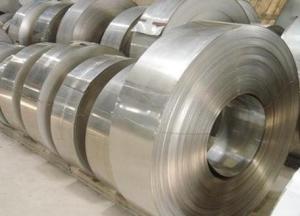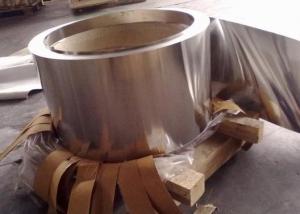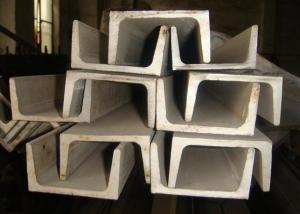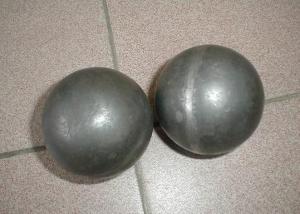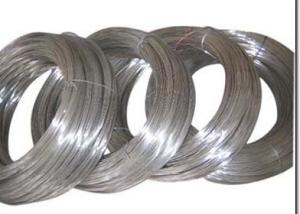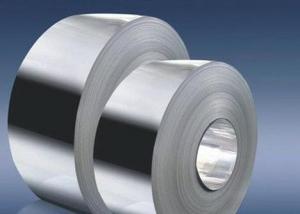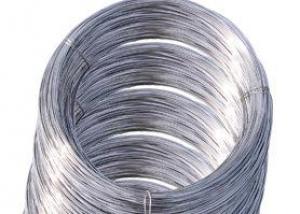SUS304L Stainless Steel Strips
- Loading Port:
- China Main Port
- Payment Terms:
- TT or LC
- Min Order Qty:
- 1 Ton m.t.
- Supply Capability:
- 2000 Tons Per Month m.t./month
OKorder Service Pledge
OKorder Financial Service
You Might Also Like
304L Stainless Steel Strips
1. Chemical composition
|
C |
Si |
Mn |
P |
S |
Ni |
Cr |
|
Max0.03 |
Max1.00 |
Max2.00 |
Max0.045 |
Max0.03 |
9.0-13.0 |
18.0-20.0 |
2. Mechanical properties
|
Yield Strength |
Tensile |
Elongation |
Hardness (HV) |
Hardness (HRB) |
|
≥175 |
≥480 |
≥40 |
≤200 |
≤90 |
3. Standard: AISI, ASTM, GB, EN, DIN, JIS
4. Surface: 2B, NO.1, BA, NO.4, Hairline, SB, Mirror finish, Anti-skid, Cherkered etc.
5. Size: Thickness: 0.3-3mm (cold rolled), 3-40mm (hot rolled)
Width: 1000mm or 1219mm or 1240mm for cold rolled, 1500mm for hot rolled.
Length: As customers' request.
6. MOQ: 1 Ton
7. Payment terms: T/T or L/C
8. Packing: Seaworthy package with wooden or Iron pallets with the paper and the steel strip, or as customers' request.
9. Delivery time: Usually about 7 days after we confirming the order, or according to your quantity.
If you have any question or demand, pls feel free to contact me.
| Standard Name | Chemical Composition | Mechanical Properties | ||||||||||||||
| JIS | GB | AIST | EN | C | Si | Mn | P | S | Ni | Cr | Others | Yield Strength | Tensile | Elongation | Hardness | |
| UNS | max | max | max | max | max | max | N/mm2 | N/mm2 | % | HV | HRB | |||||
| Austenitic stainless steels | ||||||||||||||||
| SUS201 | 1Cr17Mn6Ni5N | 201 | ** | 0.15 | 1 | 5.50-7.50 | 0.06 | 0.03 | 1 | 16.00-18.00 | N0.25 | 245 | 640 | 40 | 253 | 100 |
| SUS202 | 1Cr18Mn8Ni5N | 202 | ** | 0.15 | 1 | 7.50-10.00 | 0.06 | 0.03 | 4.00-6.00 | 17.00-19.00 | N0.25 | 245 | 590 | 40 | 218 | 95 |
| SUS301 | 1Cr17Ni7 | 301 | 1.431 | 0.15 | 1 | 2 | 0.045 | 0.03 | 6.00-8.00 | 16.00-18.00 | — | ≥205 | ≥520 | ≥40 | ≤218 | ≤95 |
| SUS301L | 00Cr17Ni7 | 301L | 1.4318 | 0.03 | 1 | 2 | 0.045 | 0.03 | 6.00-8.00 | 16.00-18.00 | N:0.20 | ≥215 | ≥550 | ≥45 | ≤218 | ≤95 |
| SUS304 | 0Cr18Ni9 | 304 | 1.4301 | 0.08 | 1 | 2 | 0.045 | 0.03 | 8.0-10.50 | 18.00-20.00 | — | ≥205 | ≥520 | ≥40 | ≤200 | ≤90 |
| SUS304L | 00Cr19Ni10 | 304L | 1.4307 | 0.03 | 1 | 2 | 0.045 | 0.03 | 9.00-13.00 | 18.00-20.00 | — | ≥175 | ≥480 | ≥40 | ≤200 | ≤90 |
| SUS304CU | 0Cr18Ni9 | 304 | 1.4301 | 0.08 | 1 | 2 | 0.045 | 0.03 | 8.00-10.50 | 18.00-20.00 | CU:0.70-1.30 | ≥205 | ≥520 | ≥40 | ≤200 | ≤90 |
| SUS304Ni8.5 | 0Cr18Ni9 | 304 | 1.4301 | 0.08 | 1 | 2 | 0.045 | 0.03 | 8.50-10.50 | 18.00-20.00 | — | ≥205 | ≥520 | ≥40 | ≤200 | ≤90 |
| SUS304Ni9 | 0Cr18Ni9 | 304 | 1.4301 | 0.08 | 1 | 2 | 0.045 | 0.03 | 9.00-10.50 | 18.00-20.00 | — | ≥205 | ≥520 | ≥40 | ≤200 | ≤90 |
| SUS316 | 0Cr17Ni12Mo2 | 316 | 1.4401 | 0.08 | 1 | 2 | 0.045 | 0.03 | 10.00-14.00 | 16.00-18.00 | Mo:2.00-3.00 | ≥205 | ≥520 | ≥40 | ≤200 | ≤90 |
| SUS316L | 00Cr17Ni14Mo2 | 316L | 1.4404 | 0.03 | 1 | 2 | 0.045 | 0.03 | 10.00-14.00 | 16.00-18.00 | Mo:2.00-3.00 | ≥175 | ≥480 | ≥40 | ≤200 | ≤90 |
| SUS316Ti | 1Cr18Ni12Mo2Ti | 316Ti | 1.4571 | 0.08 | 1 | 2 | 0.035 | 0.03 | 11.0-14.0 | 16.00-19.00 | Ti 5*C%-0.70,Mo 1.8-2.5 | ≥205 | ≥520 | ≥40 | ≤200 | ≤90 |
| SUS321 | 0Cr18Ni10Ti | 321 | 1.4541 | 0.08 | 1 | 2 | 0.045 | 0.03 | 9.00-13.00 | 17.00-19.00 | Ti:5*C% | ≥205 | ≥520 | ≥40 | ≤200 | ≤90 |
| SUS309S | 0Cr23Ni13 | 309S | 1.4833 | 0.08 | 1 | 2 | 0.045 | 0.03 | 12.00-15.00 | 22.00-24.00 | — | ≥205 | ≥520 | ≥40 | ≤200 | ≤90 |
| SUS310S | 0Cr25Ni20 | 310S | 1.4845 | 0.08 | 1.5 | 2 | 0.045 | 0.03 | 19.00-22.00 | 24.00-26.00 | — | ≥205 | ≥520 | ≥40 | ≤200 | ≤90 |
| Ferritic stainless steels | ||||||||||||||||
| SUH409L | 00Cr12Ti | 409L | 1.4512 | 0.03 | 1 | 1 | 0.04 | 0.03 | — | 10.50-11.75 | Ti:6*C%-0.75 | ≥175 | ≥360 | ≥25 | ≤175 | ≤80 |
| SUS436L | 00Cr17Mo | ** | ** | 0.025 | 1 | 1 | 0.04 | 0.03 | — | 16.00-19.00 | Mo:0.75-1.50、Ti,Nb,Zr:8*(C%+N%)-0.80 | ≥245 | ≥410 | ≥20 | ≤230 | ≤96 |
| SUS410 | ** | 410 | 1.4006 | 0.15 | 1 | 1 | 0.04 | 0.03 | — | 11.50-13.50 | — | ≥205 | ≥440 | ≥20 | ≤210 | ≤93 |
| SUS410L | 00Cr12 | ** | 1.4003 | 0.03 | 1 | 1 | 0.04 | 0.03 | — | 11.00-13.50 | — | ≥195 | ≥360 | ≥22 | ≤200 | ≤88 |
| SUS439 | 00Cr17 | ** | 1.451 | 0.03 | 1 | 1 | 0.04 | 0.03 | 0.5 | 17.00-19.00 | Ti:〔0.20+4*(C+N)〕-1.10,Al:0.15:N:0.030 | ≥205 | ≥415 | ≥22 | ≤200 | ≤89 |
| SUS434 | ** | 434 | 1.4113 | 0.12 | 1 | 1 | 0.04 | 0.03 | — | 16.00-18.00 | — | ≥205 | ≥450 | ≥22 | ≤200 | ≤88 |
| SUS444 | 00Cr18Mo2 | 444 | 1.4521 | 0.025 | 1 | 1 | 0.04 | 0.03 | — | 17.00-20.00 | Mo:1.75-2.50 Ti,Nb,Zr:8*(C%+N%)-0.80 | ≥245 | ≥410 | ≥20 | ≤230 | ≤96 |
| SUS430 | 1Cr17 | 430 | 1.4016 | 0.12 | 1 | 1 | 0.04 | 0.03 | — | 16.00-18.00 | — | ≥205 | ≥420 | ≥22 | ≤200 | ≤88 |
| Martensitic stainless steels | ||||||||||||||||
| SUS420J1 | 2Cr13 | 420 | 1.4021 | 0.16-0.25 | 1 | 1 | 0.04 | 0.03 | — | 12.00-14.00 | — | ≥225 | ≥520 | ≥18 | ≥234 | ≥97 |
| SUS420J2 | 3Cr13 | 420JS | 1.4028 | 0.26-0.40 | 1 | 1 | 0.04 | 0.03 | — | 12.00-14.00 | — | ≥225 | ≥540 | ≥18 | ≥247 | ≥99 |
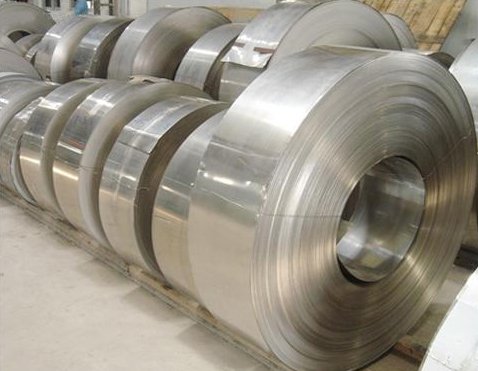
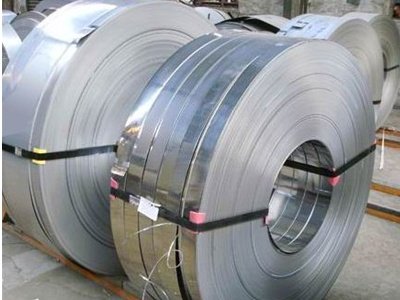
- Q:Is stainless steel wire suitable for wire bonding?
- Yes, stainless steel wire is suitable for wire bonding in certain applications. Stainless steel wire has several properties that make it a good choice for wire bonding. Firstly, stainless steel is highly resistant to corrosion, which is important for ensuring the long-term reliability of the wire bond. Secondly, stainless steel wire has good mechanical strength, allowing it to withstand the stresses and strains involved in the wire bonding process. Additionally, stainless steel wire has good electrical conductivity, which is necessary for effective electrical connections in wire bonding. However, it is important to note that stainless steel wire may not be suitable for all types of wire bonding applications, as other factors such as wire diameter, surface finish, and the specific bonding process used may also need to be considered.
- Q:What kind of material is stainless steel drawing stainless steel? What are the main advantages and disadvantages?
- The advantages of the so-called oil grinding sand drawing sand is that the surface is more delicate, the visual effect is relatively better, better rust resistance, and other physical properties have not changed, the disadvantage is that the processing price is relatively high. If you do not require high selection of domestic grinding machine, because the water gas will rust. Stainless steel can also rust.
- Q:What are the different types of stainless steel wire electrodes?
- Various welding applications commonly use several different types of stainless steel wire electrodes. The choice of electrode depends on the desired welding characteristics and the intended application. One type frequently used is the ER308L stainless steel wire electrode, which is designed for welding 18% chromium - 8% nickel stainless steels like types 301, 302, 304, and 305. It has excellent corrosion resistance and can weld similar or dissimilar stainless steels. Another popular option is the ER309L stainless steel wire electrode, specifically designed for welding 300 series stainless steels to carbon or low alloy steels. It provides high strength and resistance to cracking, making it suitable for joining dissimilar metals. For high-temperature environments, the ER310 stainless steel wire electrode is commonly used. It is designed for welding heat-resistant stainless steels like types 310, 314, and 446, offering excellent resistance to scaling and oxidation at elevated temperatures. Specialized applications also have stainless steel wire electrodes available. For instance, the ER316L stainless steel wire electrode is designed for welding molybdenum-bearing austenitic stainless steels such as type 316. It offers superior corrosion resistance and is prevalent in the chemical and petrochemical industries. Overall, the various types of stainless steel wire electrodes possess different characteristics and properties suitable for diverse welding applications. Selecting the appropriate electrode based on project requirements is crucial to achieve optimal results.
- Q:Can stainless steel wire be used for guitar frets?
- Guitar frets, as a general rule, are not typically fashioned from stainless steel wire. Instead, they are commonly crafted from nickel-silver or nickel alloy, renowned for their durability, resistance to wear, and ability to produce a clear and distinguishable sound. In contrast, stainless steel wire is firmer and less pliable than nickel-silver, rendering it less suitable for frets. Furthermore, stainless steel has the potential to be overly abrasive, causing excessive wear on guitar strings, resulting in diminished playability and tone quality. Consequently, it is advisable to employ appropriate materials such as nickel-silver or nickel alloy for guitar frets to ensure optimal performance and longevity.
- Q:Can stainless steel wire be used in high temperature environments?
- Yes, stainless steel wire can be used in high temperature environments. Stainless steel is known for its excellent heat resistance properties, making it suitable for applications where high temperatures are involved. It has a high melting point and can withstand extreme temperatures without losing its strength or integrity. This makes stainless steel wire ideal for use in industries such as aerospace, automotive, and manufacturing, where components are exposed to elevated temperatures. Additionally, stainless steel wire has excellent corrosion resistance, further enhancing its suitability for high temperature environments.
- Q:What are the different tensile strength options available for stainless steel wire?
- Stainless steel wire is renowned for its remarkable strength and durability, making it a favored choice for a broad range of uses. The tensile strength of stainless steel wire pertains to its capacity to endure pulling forces without fracturing or distorting. When it comes to tensile strength for stainless steel wire, there are numerous alternatives available, each tailored to specific purposes and criteria. The most prevalent options for tensile strength in stainless steel wire encompass grades 304, 316, and 430. 1. Typically exhibiting a tensile strength of approximately 70,000 to 90,000 pounds per square inch (psi), grade 304 stainless steel wire offers exceptional resistance to general corrosion. This grade is well-suited for diverse applications, including wire mesh, springs, and fasteners. 2. Grade 316 stainless steel wire presents a higher tensile strength than grade 304, ranging from 80,000 to 100,000 psi. This grade showcases remarkable resistance to corrosion, particularly in marine environments or when exposed to chemicals or acidic substances. It finds common use in marine rigging, medical equipment, and industrial wire rope. 3. Grade 430 stainless steel wire possesses a lower tensile strength compared to grades 304 and 316, typically ranging from 55,000 to 75,000 psi. This grade is often employed in less demanding applications where primary concern does not lie in corrosion resistance. It is commonly utilized for decorative purposes, such as architectural wire mesh or jewelry. In addition to the aforementioned grades, various specialty stainless steel wires are available, each boasting different tensile strengths. These specialty wires are specifically designed for applications necessitating exceptional strength or resistance to extreme conditions. To summarize, the available options for tensile strength in stainless steel wire include grade 304, grade 316, grade 430, and various specialty wires. Understanding the specific requirements of your application will aid in determining the most suitable tensile strength option for your stainless steel wire needs.
- Q:What are the different wire surface lubrication options available for stainless steel wire?
- There are several different wire surface lubrication options available for stainless steel wire. Some of the common options include: 1. Dry lubrication: This method involves coating the wire surface with a dry lubricant, such as graphite or molybdenum disulfide. Dry lubrication reduces friction between the wire and any contacting surfaces, improving the wire's performance and lifespan. 2. Oil-based lubrication: Applying a thin layer of oil or oil-based lubricant to the wire surface helps to reduce friction and prevent corrosion. This method is commonly used in applications where the wire is subjected to high temperatures or harsh environments. 3. Wax-based lubrication: Wax-based lubricants, such as paraffin or beeswax, can be applied to the wire surface to provide a protective coating. This type of lubrication helps reduce friction and prevents the wire from sticking to other surfaces. 4. Polymer coatings: Polymer coatings, such as polytetrafluoroethylene (PTFE) or nylon, can be applied to the wire surface to provide lubrication. These coatings create a low-friction barrier between the wire and any contacting surfaces, reducing wear and improving the wire's performance. 5. Dry film lubrication: Dry film lubrication involves applying a thin layer of lubricant, typically a solid film, to the wire surface. This type of lubrication provides long-lasting protection against wear and corrosion, even under extreme conditions. It is important to select the appropriate lubrication option based on the specific application requirements, as each option has its own advantages and limitations.
- Q:How are stainless steel wire baskets used in industrial applications?
- Due to their durability, versatility, and corrosion-resistant properties, stainless steel wire baskets are extensively used in a wide range of industrial applications. These baskets have been specifically designed to withstand harsh conditions, which makes them ideal for industrial environments where they are exposed to heavy loads, high temperatures, and corrosive chemicals. In industrial applications, stainless steel wire baskets are commonly employed for material handling and storage purposes. These baskets ensure the safe transportation and storage of various materials, including small parts, components, tools, and equipment. Thanks to their wire mesh design, these baskets offer easy visibility and accessibility to the contents, thus facilitating inventory management and quick identification of items. Another important application of stainless steel wire baskets is found in parts washing and cleaning procedures. In these processes, these baskets are used to securely hold and protect delicate or small components, guaranteeing their thorough cleaning without any damage. The wire mesh design allows for proper drainage and circulation of cleaning solutions, ensuring efficient and effective cleaning. Stainless steel wire baskets are also widely utilized in heat treatment processes, such as annealing, tempering, or quenching. Thanks to their ability to withstand high temperatures and rapid temperature changes without warping or deforming, these baskets are employed to hold and transport parts or components during the heat treatment process. This ensures uniform heat distribution and reduces the risk of distortion. Moreover, stainless steel wire baskets find applications in the food and beverage industry. They are commonly used for washing, draining, and storing food products, such as fruits, vegetables, or seafood. The stainless steel material is hygienic, easy to clean, and resistant to corrosion, making it suitable for maintaining food safety standards. In conclusion, stainless steel wire baskets play a vital role in various industrial applications, providing reliable and efficient solutions for material handling, storage, parts washing, heat treatment, and food processing. Their sturdy construction, corrosion resistance, and versatility make them the preferred choice for industries that require durable and high-quality equipment.
- Q:Can stainless steel wire be used for welding electrodes?
- Yes, stainless steel wire can be used for welding electrodes. It is commonly used in applications that require corrosion resistance and high strength, such as in the welding of stainless steel materials.
- Q:Can stainless steel wire be used for musical instrument strings?
- Yes, stainless steel wire can be used for musical instrument strings. In fact, stainless steel is a popular choice for guitar, piano, and other string instrument strings due to its durability and corrosion resistance. Stainless steel strings offer a bright and crisp tone, making them suitable for various musical genres. They also tend to have a longer lifespan compared to other materials like nickel or bronze. However, it's worth noting that the choice of string material ultimately depends on the instrument and the desired sound, so it's always recommended to consult with a professional or experiment with different types of strings to find the best fit for a specific musical instrument.
1. Manufacturer Overview |
|
|---|---|
| Location | Hebei,China |
| Year Established | 1989 |
| Annual Output Value | Above US$160 Thousand |
| Main Markets | Europe, East Asia and Southeast Asia |
| Company Certifications | ISO9001:2000; |
2. Manufacturer Certificates |
|
|---|---|
| a) Certification Name | |
| Range | |
| Reference | |
| Validity Period | |
3. Manufacturer Capability |
|
|---|---|
| a)Trade Capacity | |
| Nearest Port | Tianjin |
| Export Percentage | 70% |
| No.of Employees in Trade Department | 30 People |
| Language Spoken: | English;Chinese |
| b)Factory Information | |
| Factory Size: | Above 14,500 square meters |
| No. of Production Lines | Above 6 |
| Contract Manufacturing | OEM Service Offered;Design Service Offered |
| Product Price Range | Average |
Send your message to us
SUS304L Stainless Steel Strips
- Loading Port:
- China Main Port
- Payment Terms:
- TT or LC
- Min Order Qty:
- 1 Ton m.t.
- Supply Capability:
- 2000 Tons Per Month m.t./month
OKorder Service Pledge
OKorder Financial Service
Similar products
New products
Hot products
Hot Searches
Related keywords
